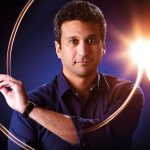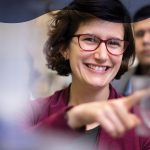After an egg is fertilized, cells begin to divide and form a blastocyst, a two-layered cluster of cells. The way a blastocyst develops has implications for whether a pregnancy is successful, how organs form, and potentially even for diseases later in life, but studying blastocysts has been a challenge. Professor Juan Carlos Izpisua Belmonte and colleagues created mouse blastocyst-like structures, dubbed “blastoids,” that had the same structure as natural blastocysts, and offering a powerful new tool to advance research by circumventing the need for natural embryos.
The Izpisua Belmonte lab also wanted to study a critical milestone in development after the formation of the blastocyst: gastrulation. This stage occurs when an embryo transforms into a three-layered structure, from which all future tissues and organs will be derived. Izpisua Belmonte led an international team to uncover new insights into gastrulation by creating a method enabling primate embryos to grow in the laboratory longer than ever before. The research, while done in nonhuman primate cells, could potentially inform approaches to regenerative medicines.
Read October 31, 2019 News Release Read October 17, 2019 News Release






















































